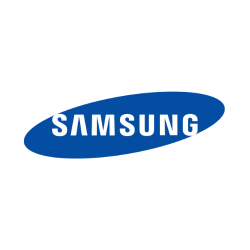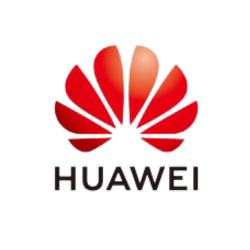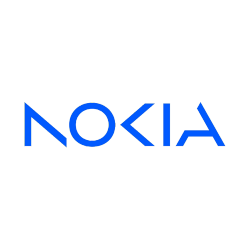
Introduction to the Nokia N-Gage
The Nokia N-Gage was a groundbreaking device introduced by Nokia in late 2003. It was an ambitious attempt to merge handheld gaming with mobile telephony, aiming to provide consumers with an all-in-one entertainment solution. This device stood out at a time when mobile gaming was a nascent industry and laid the groundwork for future innovations in mobile gaming.
Design and Build
The Nokia N-Gage had a unique design that differentiated it from standard mobile phones of its time. With dimensions of 134 x 70 x 20 mm and a weight of 137 grams, it was bulkier compared to typical devices. The unconventional form factor, resembling a taco, earned it the nickname "taco phone." The device’s exterior featured a 2.1-inch TFT display capable of showing 4096 colors, which was impressive for its era. However, the screen’s 176 x 208 pixel resolution meant graphics had moderate clarity, sufficient for the games designed for the platform.
Display and User Interface
The display used the Symbian 6.1 operating system with a Series 60 version 1.0 UI, a familiar environment for Nokia users at that time. The screen, though small and not optimized for long gaming sessions, was functional. The intuitive UI allowed users to navigate through the phone’s features, including gaming, easily.
Hardware Specifications
At the heart of the Nokia N-Gage was the 104 MHz ARM 920T processor. It came with a paltry 3.4 MB of internal storage, extendable through MMC card slots, which was essential for storing various gaming software and apps. The device didn't come with a camera, reflecting its focus on gaming and communication.
Battery Life
Powered by a removable Li-Ion 850 mAh battery, the N-Gage offered up to 200 hours of standby time and up to 4 hours of talk time. For gaming, especially graphics-heavy applications, frequent charging was necessary. This limitation was a challenge for gaming enthusiasts wanting extended, uninterrupted sessions.
Connectivity and Networking
The Nokia N-Gage supported GSM 900 / 1800 / 1900 bands, ensuring widespread network coverage. It had GPRS Class 6 for data connectivity, although this was relatively slow compared to modern standards. Bluetooth 1.1 was included for transferring files and connecting to peripherals, a useful feature for exchanging game data or using wireless headsets.
Multimedia and Features
The device had a stereo FM radio and supported downloadable polyphonic and monophonic ringtones. It was equipped with a built-in loudspeaker but lacked a 3.5mm headphone jack, which was disappointing for users wanting private audio experiences. The lack of Wi-Fi and GPS highlighted its primary function as a gaming device rather than a multifunctional mobile phone.
Gaming Experience
The standout feature of the Nokia N-Gage was undeniably its gaming capabilities. It supported multiplayer gaming via Bluetooth, an innovative feature allowing local wireless competition. Nokia also introduced an online game download service, expanding its game library beyond the pre-installed titles. These features attempted to create a mini-ecosystem similar to gaming consoles but faced challenges like awkward game cartridge swapping, which involved removing the phone’s back cover and battery.
Market Reception and Legacy
Despite its innovative approach, the N-Gage struggled to find its footing in the market. Criticisms focused on its design flaws and cumbersome game loading procedure. Competitors like the Game Boy Advance, which boasted better gaming capabilities at a similar price point, dominated the handheld gaming market. However, the N-Gage holds a significant place in gaming history as one of the earliest attempts to combine mobile telephony with robust gaming, setting the stage for modern smartphone gaming.
Discontinuation and Conclusion
The Nokia N-Gage was announced in late 2003 and eventually discontinued as the market shifted towards more advanced smartphones offering gaming alongside a full suite of mobile applications. Nokia’s endeavor with the N-Gage was a crucial learning experience, highlighting the challenges of converging technology functions. Despite its commercial shortcomings, the N-Gage paved the path for future innovations in mobile gaming and informed smartphone designs that followed, leaving an indelible mark on technology history.
Key Features of Nokia N-Gage
- Supports GSM technology with 2G bands GSM 900/1800/1900
- Equipped with TFT display supporting 4096 colors
- Compact dimensions at 134 x 70 x 20 mm and lightweight at 137 g
- Powered by Symbian 6.1 OS with Series 60 v1.0 UI
- ARM 920T processor clocked at 104 MHz
- Expandable memory with MMC card slot
- Stereo FM radio and Bluetooth 1.1 connectivity
- WAP 2.0/xHTML, iMode browser for internet browsing
- Removable Li-Ion 850 mAh battery providing up to 200 hours standby and 4 hours talk time
- Supports a variety of ringtones including MP3 and WAV
- Includes a loudspeaker for better audio output
Disadvantages of Nokia N-Gage
- Limited to GSM technology without EDGE support.
- Discontinued model, no longer available for purchase.
- Bulky design with a thickness of 20 mm and a weight of 137 g.
- Low screen-to-body ratio with a small 2.1-inch display.
- Low resolution display capable of only 4096 colors.
- Limited internal memory of just 3.4MB, relies on MMC for expansion.
- No built-in camera.
- Absence of a standard 3.5mm headphone jack.
- Lack of modern connectivity features like WLAN and GPS.
- Utilizes a proprietary USB connection instead of a standard type.
- Low processor speed with a 104 MHz ARM 920T CPU.
- Symbian 6.1 OS is outdated, limiting app availability.

View Also
More Phones
All Rights Reserved +13895 Phones © Mobilawy 2025

























